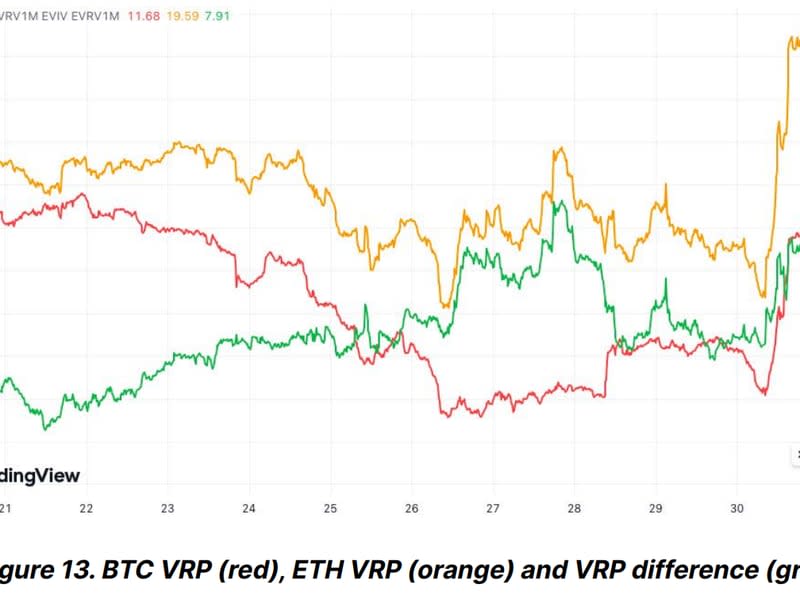Key Bitcoin Indicator Points to Period of Calm in Crypto Market
BTC's volatility risk premium (VRP) has collapsed since halving, a sign traders foresee relatively stable market conditions ahead.
ETH's VRP remains elevated compared to bitcoin.
A week ago, Arthur Hayes, the former CEO of the BitMEX crypto exchange, said bitcoin {{BTC}} had bottomed out, but the expected move higher is likely to be slow.
Now, an indicator called the volatility risk premium (VRP) is suggesting the same, signaling a relatively low volatility market environment ahead, which could be seen as a positive development by long-term investors.
VRP reflects the tendency of an underlying asset's option-induced implied volatility, a measure of expectations for price turbulence, to exceed realized volatility over time. The spread represents the premium options sellers demand for additional risks associated with future uncertainty and price volatility.
The one-month VRP has collapsed to 2.5% from 15% since the Bitcoin blockchain implemented mining reward halving on April 20, according to data tracked by Bitfinex's analysts. The VRP calculation is based on the gap between Volmex's bitcoin 30-day implied volatility index (BVIV) and one-month realized volatility (VBRV).
"The significant narrowing of the VRP indicates a realignment of market expectations to a more stable and predictable environment post-halving," analysts at Bitfinex said in a note shared with CoinDesk. "The market consensus seems to be that future volatility may be less than previously anticipated following the halving."
In other words, uncertainty has ebbed and market participants foresee more predictable market conditions.

On April 20, the Bitcoin blockchain cut per block supply emission to 3.125 BTC from 6.125 BTC in a quadrennial event that halved the pace of supply expansion.
The consensus is that global debt concerns and massive fiscal spending by the U.S. will help bitcoin repeat its record of posting solid gains in the months after the halving.
As of writing, the leading cryptocurrency by market value was changing hands at $62,400, largely unchanged since halving. Prices, however, have recently recovered from lows near $56,500.
ETH outlook relatively uncertain
While ether's {{ETH}} one-month VRP has declined to 8.5% from 18%, it remains elevated compared with bitcoin, a sign traders see ether's future as relatively uncertain.
"A possible reason for Ethereum VRP to drop less, is that the SEC’s ETF decision on May 23, 2024 acts as an additional uncertainty for the ETH price. This also confirms that VRP captures the premium related to future uncertainty," Bitfinex's analysts said. The U.S. Securities and Exchange Commission is facing several applications for spot ether exchange-traded funds.

 Yahoo Finance
Yahoo Finance 